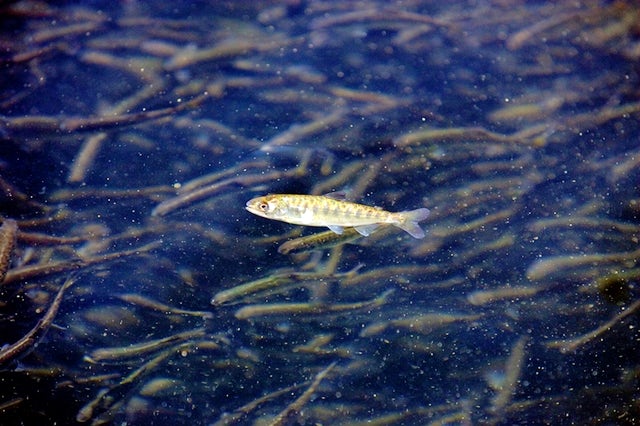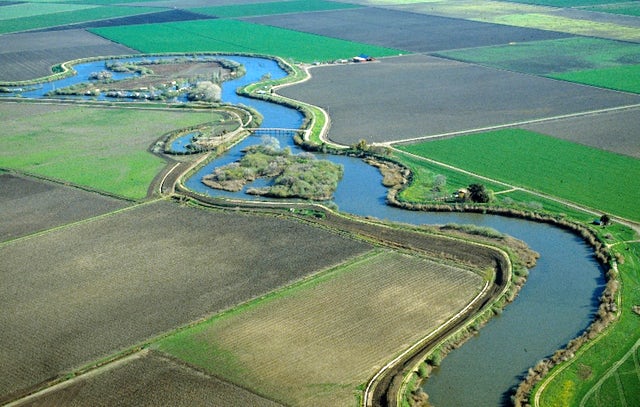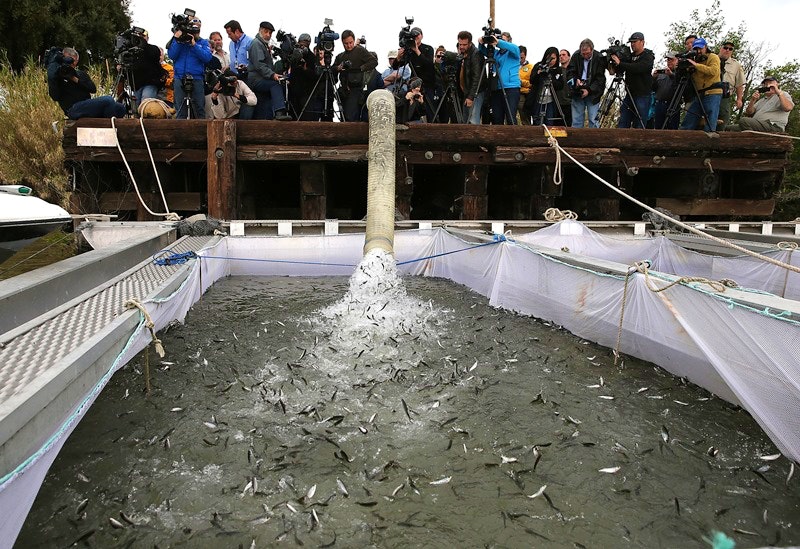From Sportfishing
Fish Report for 3-20-2018

Chinook Salmon 'Overfished'? Not So Fast, Says Fishers
3-20-2018
Alastair Bland
FOR FISHERY REGULATORS, it is official: The Sacramento River’s fall-run Chinook salmon are “overfished.”
This formal designation, made in a February report from the Pacific Fishery Management Council, comes after three consecutive years of critically low returns of spawning adults, which lay and fertilize their eggs in the Sacramento River and its tributaries. Now, as regulators discuss drastically shortening this year’s fishing season to reduce pressures on the population, embittered fishers are contesting the overfished status. And it’s not just a matter of semantics. There is concern that attaching the wrong word to the problem could result in the wrong management decisions to fix it. The problem, the fishers say, is not how many salmon are being caught but the number of newly born juveniles that even make it to the ocean in the first place – and at the root of that issue is upstream water conditions.
“Are you kidding me? They aren’t overfished!” exclaimed Half Moon Bay commercial fisher Kirk Lombard, irate upon hearing about the designation. “Fishing isn’t the problem. They had a few terrible years with almost no water.”
Tens of millions of fertilized salmon eggs were killed in 2014 and 2015, when sun-heated water – warmed to lethal temperatures for the eggs – flowed for weeks out of the severely depleted Lake Shasta, just a few miles upstream of prime Chinook spawning grounds. This affected both endangered winter-run Chinook and fall-run Chinook, the latter of which is the core of the state’s salmon fishery.
Millions of young salmon were successfully reared by Central Valley hatcheries during those years. However, biologists say many of these fish – most of which were released from trucks directly into San Francisco Bay – starved upon reaching the open ocean. Unusually weak wind systems multiple years in a row curtailed deep-water upwelling, resulting in almost no plankton and krill for the little salmon to eat.
“The Sacramento fish have gone through a series of events that were not positive in any way, shape or form, and now we’re dealing with the results,” said Harry Morse, an information officer with the California Department of Fish and Wildlife.
Fishery managers consider 122,000 to be the minimum number of spawning adult fall-run Chinook necessary to sustain the Sacramento’s population. However, just 112,947 returned to the Sacramento in 2015 and just 89,674 in 2016. The following year, just 44,574 fall-run fish were counted swimming upstream, triggering the regulatory designation of “overfished.”
Morse acknowledged the shortcomings of the word when applied to Chinook salmon.
“It doesn’t convey to the public the complexity of the environment, or the series of events that have been so catastrophic for the salmon,” he said.
The reason the term is used, then, is because of a federal law – the Magnuson-Stevens Fishery Conservation and Management Act of 1976. This law, which sets the framework for managing sustainable fisheries, states that a population of fish that falls below a predetermined minimum population level is “overfished.” Generally, fish species that decline below their respective threshold do so because of fishing pressure. A variety of West Coast rockfishes, for example, were fished intensively for decades, before tight fishing restrictions were imposed in the early 2000s. This has prompted a dramatic rebound.
“For many species and fisheries, ‘overfished’ is an appropriate term, because they are depleted because of harvest,” said Sarah Bates, a commercial salmon fisher in San Francisco. “West Coast salmon are not one of those fisheries. The reason they’re depleted is the loss of breeding habitat.”
The unique life cycle of a salmon includes months or years spent in freshwater, making them particularly vulnerable to environmental impacts unrelated to fishing. Dams, riverside development, water diversions and drought have all impacted the Sacramento River’s Chinook. Prior to European-American colonization of the West, as many as 2 million Chinook may have spawned in the Central Valley’s rivers annually. Today, half a million fish may swim upriver in an exceptional year, with hatcheries producing most of each year’s offspring.
Marc Gorelnik, a member of the Pacific Fishery Management Council, which helps set fishing regulations, blames the drought – combined with the way in which the United States Bureau of Reclamation has managed water flows – for plunging salmon numbers.
“In 2014 and 2015, they were supposed to impound enough cold water behind Shasta Dam for the fish, and they didn’t,” he said.
Instead, the agency released so much water from Lake Shasta early in the year that, by the time the salmon had returned to the Sacramento to spawn, the lake’s cold water pool was gone – delivered largely to Sacramento Valley rice farmers. This proved lethal for the fish’s temperature-sensitive eggs.
Bates suggested that depleted Chinook salmon be labeled something other than overfished.
“We could call them ‘environmentally devastated’ or ‘agriculturally strangled,’” she said.
The Magnuson-Stevens fishery law requires that regional management councils establish rebuilding plans for fish populations that have been declared overfished. The law restricts rebuilding efforts primarily to fishing.
“But we have to remember that for our salmon, rebuilding is not a question of limiting harvest,” Bates said. “That won’t do it. We need to protect and resurrect breeding habitat.”
Diminished salmon populations can rebound rapidly under favorable environmental conditions, thanks to the fish’s relatively short lifespan of just three or four years and the large number of eggs that a single female lays at spawning time – an average of about 5,000. After the Central Valley’s salmon runs collapsed to just 53,000 spawning adults in 2009, they bounced right back. About 163,000 adult fish swam into the Central Valley in 2010. In 2013, almost 450,000 fish came back.
The 2007–09 crash was caused by low ocean productivity “on top of a long-term, steady degradation of the freshwater and estuarine environment,” according to a report from biologists with the U.S. National Marine Fisheries Service.
“And they still called it overfished,” Gorelnik said.
Efforts are underway to amend the Magnuson-Stevens law. A Congressional bill, House Resolution 200, introduced in early 2017, seeks to replace “overfished” with “depleted.” More recently, in a letter sent by fishing groups to Alaska Republican senator Dan Sullivan, fishing interests argued that “the term ‘overfished’ is perceived negatively and can unfairly implicate the industry for stock conditions resulting from other factors.”
The movement has generated pushback from conservation groups, who feel such an amendment could allow harmful fishing interests to escape deserved blame for depleting stocks.
But Gorelnik said continuing to call depressed Chinook salmon runs “overfished” is misleading and possibly even counterproductive. He worries that the term could prompt a rebuilding plan that focuses on fishery limits but fails to look closely at inland environmental conditions.
“If the salmon are labeled as ‘overfished,’ then what’s the solution? Close fishing, and that doesn’t address the problem,” he said.
Alastair Bland is a freelance journalist in San Francisco, CA. He can be reached at allybland79@gmail.com or via Twitter.
Photos
< Previous Report Next Report >
More Reports

2-20-2018
Concerning forecasts for runoff into the Rio Grande and the Colorado River are just the start of the bad news...... Read More

2-12-2018
California and other Western states will be grappling with long-term water issues related to infrastructure, clean drinking water systems and...... Read More

Website Hosting and Design provided by TECK.net
